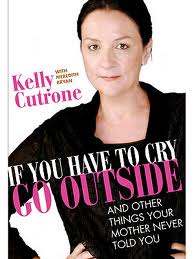Yesterday morning I woke up to the same New York Times article that the rest of the PR industry did – although I had known that it was coming. Whenever there’s an article on our industry, it seems to cause a huge hoopla – I guess we’re not used to being the ones in the spotlight – so I suppose I would be remiss to not mention it. I sat on it for a day to decide what I wanted to say and I’ve concluded that I’m not going to give my assessment of the article or the PR strategy because a) that’s been done and b) we have a connection to one of the subjects in the article, Brooke Hammerling, in that we share a client and I wouldn’t want any of my comments to be misconstrued.
Instead, I’ll say here’s the article I would have rather read – or would like to see someone take the time to write – about PR. Let’s follow the next PR subject and his or her clients around for a good six months to a year. Let’s get past the launch phase and the initial hoopla (if done well), and watch how the PR team tackles strategy during the tougher times. Let’s follow a PR executive or firm that has to promote completely new concepts and companies, vs one that works for say, Facebook or Microsoft. And let’s see what else PR executives do besides “spin.”
Hell, let’s see if PR executives even know strategy, right? Michael Arrington says in his post on the subject that we (PR executives) just “Smile, Dial, Name Drop and Pray,” that we’re “frustrated by always being in the back seat” and that we’re just “there to spin whatever happened in the most favorable light possible.” Jason Calacanis has said in the past that anyone can do it and you should fire your PR firm. Robert Scoble says in his post that “PR companies haven’t figured out yet that the traffic has moved onto social networks and that journalists and influencers are watching those like a hawk.”
First of all, some of us have, Robert, and have likewise been involved in these social networks for years. Secondly, these are all yet again sweeping statements – sparked by the moves of one PR person and then applied to the whole of our industry. They are also very focused on one thing: coverage. Even if Ms. Hammerling’s strategy was to leave the tech blogs out and instead garner online mentions from the “Who’s Who” of tech, the story still began with “Ms. Hammerling, while popping green apple Jolly Ranchers into her mouth, suggests a press tour…” And anytime bloggers and reporters seem to assess the PR industry, the viewpoints usually only take into account only that one element of what our job is – and that one thing that happens to be what they do for a living: writing on and assessing products, services and companies (and I include blogs in that).
But let’s remember – I’ve said it before – PR is so much more than media coverage – it’s more than promoting a product or service. It’s more than pitching and praying, smiling and dialing or spinning and dancing. And it’s much, much more than name dropping. (Just for the record, I’ve never been much of a name dropper – I know the right people to reach when it’s important and if I don’t, I’ll quickly find out – and I seem to be doing “ok.” As I have written in the past, my approach is not only about how many existing relationships you have, but rather about the ability to connect with others in a valuable and meaningful way – journalists or otherwise. The “meaningful” way is what traditional PR agencies are struggling with – it doesn’t exactly fit the “process, repeat” model of yesteryear that likely sparks comments such as Arrington’s “smile and dial” assessment.)
Arrington is right when he says PR executives aren’t who a CEO calls “when wondering what she should do next to drive her business forward.” However, to imply that we as an industry do not influence our clients’ “strategic actions”at all is inaccurate. In fact, we do help to shape the directions of some business decisions based on what we believe the communications outcome or impact will be. We have helped to name companies, products, events and even product categories. We very carefully think about timing – and influence business actions based on it and a host of other elements. We help tongue-tied entrepreneurs to better communicate not only with customers or partners, but with media, analysts, employees and even VCs. To focus on media coverage or “influencer” tours – or just this one PR strategy from Ms. Hammerling – as “the new world of promoting start-ups” is telling only part of the story.
So again, I’d love to someday see a real analysis of the PR industry – more than a press tour, more than a product launch, more than a stereotypical pretty blonde executive working the room at a trade show. How about the daily life of a PR executive handling both small start ups and major corporations – and how the PR strategy for each not only exists, but entails much more than reaching out to media and bloggers, and how such strategies for each type of client varies greatly. And I’d prefer that the story show different types of PR executives so we don’t end up with another Lizzie Grubman MTV-style show representing our entire industry.



 Before I read Kelly Cutrone’s New York Times best seller,
Before I read Kelly Cutrone’s New York Times best seller, 

